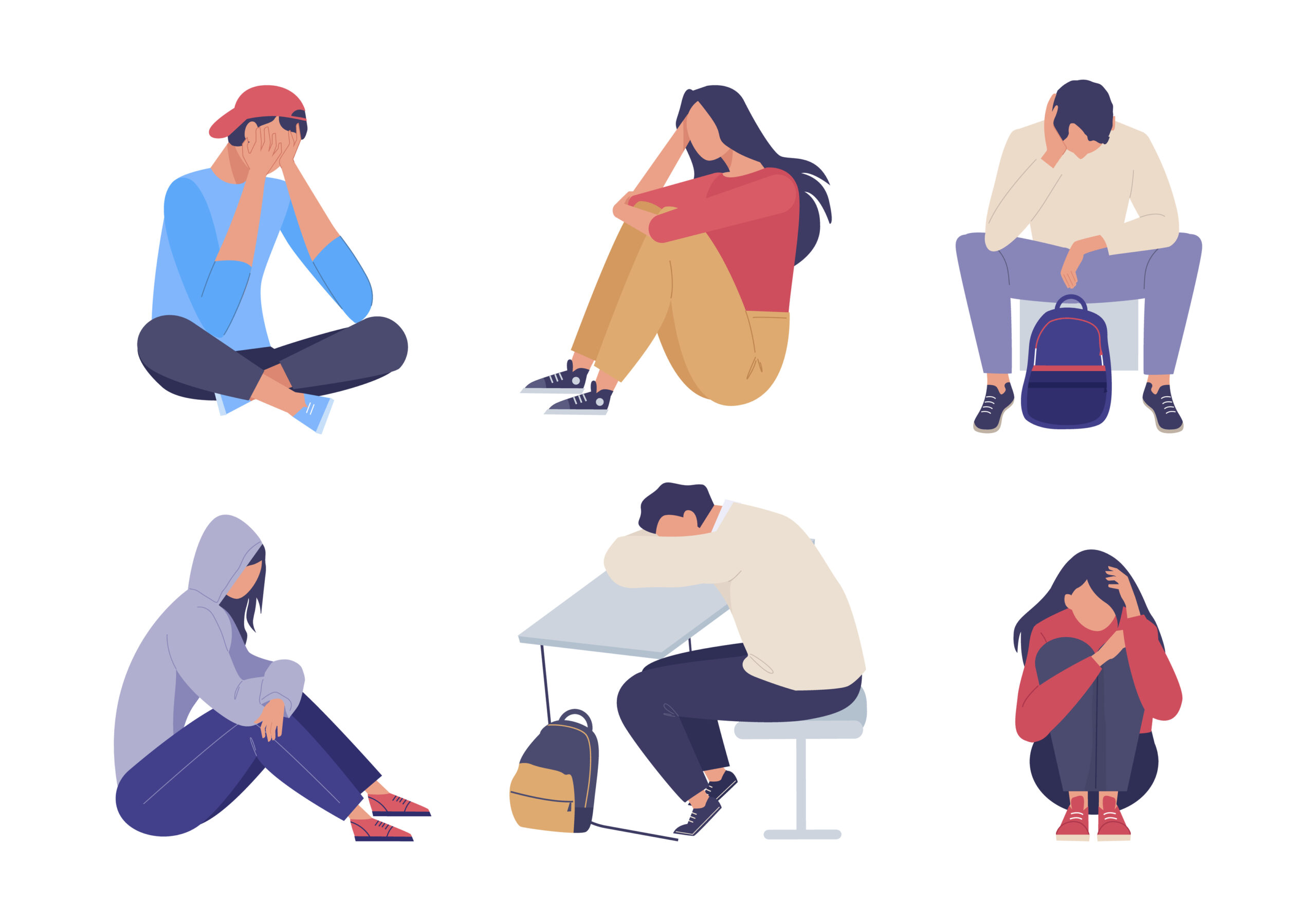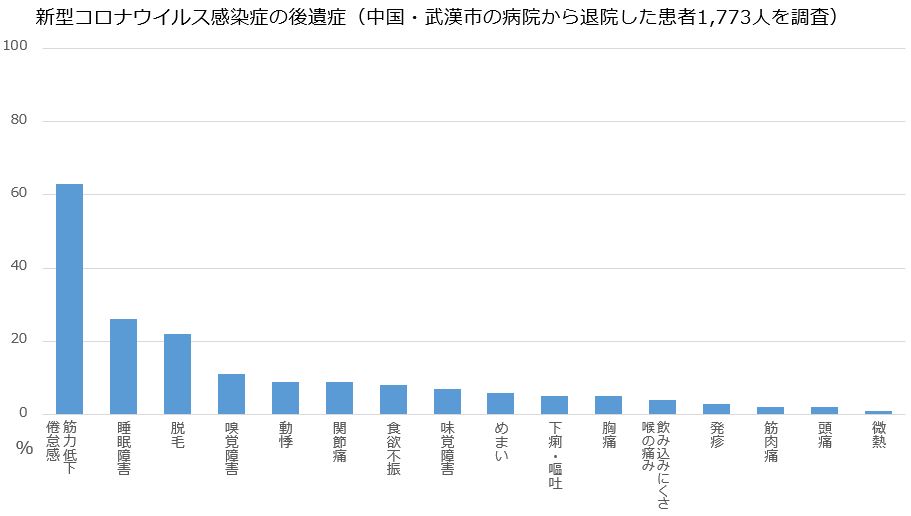
发布日期:2021.05.12
据报道,在新型冠状病毒感染症中,即使从感染中恢复,倦怠感和味觉障碍等各种症状也会持续很长时间。另外,发病后没有出现的脱毛等症状也会在几个月后出现,对日常生活造成障碍的情况也不少。这类患者被称为“长科比特”,是新型冠状病毒感染症的一大问题。
 Lancet.2021 Jan 16;397 (10270) :220 -232.开始绘制
Lancet.2021 Jan 16;397 (10270) :220 -232.开始绘制
新型冠状病毒感染症患者,康复后也有很多人因为强烈的疲倦感、睡眠障碍、脱发等而烦恼。根据今年1月向柳叶刀报告的中国武汉研究小组的数据,以武汉市医院出院的约1,700例患者为对象,在出院6个月后进行了问询调查,结果显示,诉说有某种后遗症的患者有76%。其中,疲劳和肌肉无力为63%,睡眠障碍为26%,脱发为22%,嗅觉障碍为11%,心悸为9%,关节疼痛为9%,食欲不振为8%,味觉障碍为7%,头晕为6%,腹泻和呕吐为5%,胸痛为5%,症状多种多样。
冠状后遗症不仅在重症患者中可见,在轻度患者中也可见。美国华盛顿大学研究小组今年2月向JAMA (美国医学会杂志) 报告的数据显示,该小组在发病9个月后对177例新型冠状病毒感染患者进行了追踪,结果发现,占受试者近90%的轻度门诊患者中约有33%存在某种后遗症。另外,在轻度门诊患者中,家务等日常生活动作出现障碍的病例也约占6%。
新型冠状病毒的后遗症也波及到了精神和神经。根据英国牛津大学研究小组今年5月向Lancct Psychiatry报告的数据,分析了大约236,000例感染新型冠状病毒感染的病例,大约34%的患者在诊断后半年内被诊断出患有精神和神经系统疾病。常见的是焦虑症 (约17%) 和情绪障碍 (约14%) 。中风和痴呆症等神经障碍的发病率较低,但在重症患者中有相当大的比例。
另一方面,根据去年10月在0penForum Infectious Diseases上报告的国立国际医疗研究中心医院的研究小组的数据,对因新型冠状病毒感染症而在该医院住院,并于2020年2~6月出院的63例患者在7~8月间进行了询问调查,结果发现后遗症的脱毛约为24%,发病后不会马上脱毛,多数情况是发病2个月后脱毛。治疗脱毛花了两个多月。
关于产生后遗症的原因,有很多不明的部分,但是可以认为是复合的原因交织在一起的。其中之一是器官本身的损害。新型冠状病毒具有结合称为人体血管紧张素转换酶 (ACE) 2受体的蛋白质并侵入细胞的特性。ACE2受体存在于以肺为首的鼻子和舌头的粘膜、心脏、脑、肠等。因此,如果冠状病毒在肺细胞内增殖,细胞受损,肺功能就会下降,出现咳嗽和呼吸困难等呼吸道症状。如果鼻子和舌头粘膜的细胞受损,就会产生嗅觉和味觉障碍。当心脏发生被认为是细胞损伤反应之一的炎症时,它被认为导致心悸,并且当在大脑中发生炎症时,它被认为导致脑雾 (例如注意力和记忆力下降) 。
还有人指出,冠状病毒感染全身细胞,导致称为细胞因子的过度炎症,并可能损害器官。此外,新冠病毒本身可能从体内消失,但仍会产生一些免疫反应,这表明自身抗体可能导致各种器官的炎症并引发症状。
没有针对冠状后遗症的根本治疗,采取缓解症状的对症治疗,但有冠状后遗症的人接种疫苗后,明显感到疲劳、呼吸困难、失眠等症状得到了改善。英国布里斯托尔大学研究组今年3月向medRxiv报告的数据显示,未接种组 (22人) 的后遗症改善率为15.4%,接种组 (44人) 为23.2%,明显更高。假设疫苗接种激活的免疫细胞消灭了体内残留的微量冠状病毒,即使在恢复后也是如此。
希望能弄清冠状后遗症发生的机制和开发有效的治疗方法。
MEDIUS Group 正在发展以销售医疗设备为中心的业务。参与医疗的我们(Medical + us)也想扮演一个信息源(Media)的角色,为医疗领域和人们明天的健康提供有用的信息。